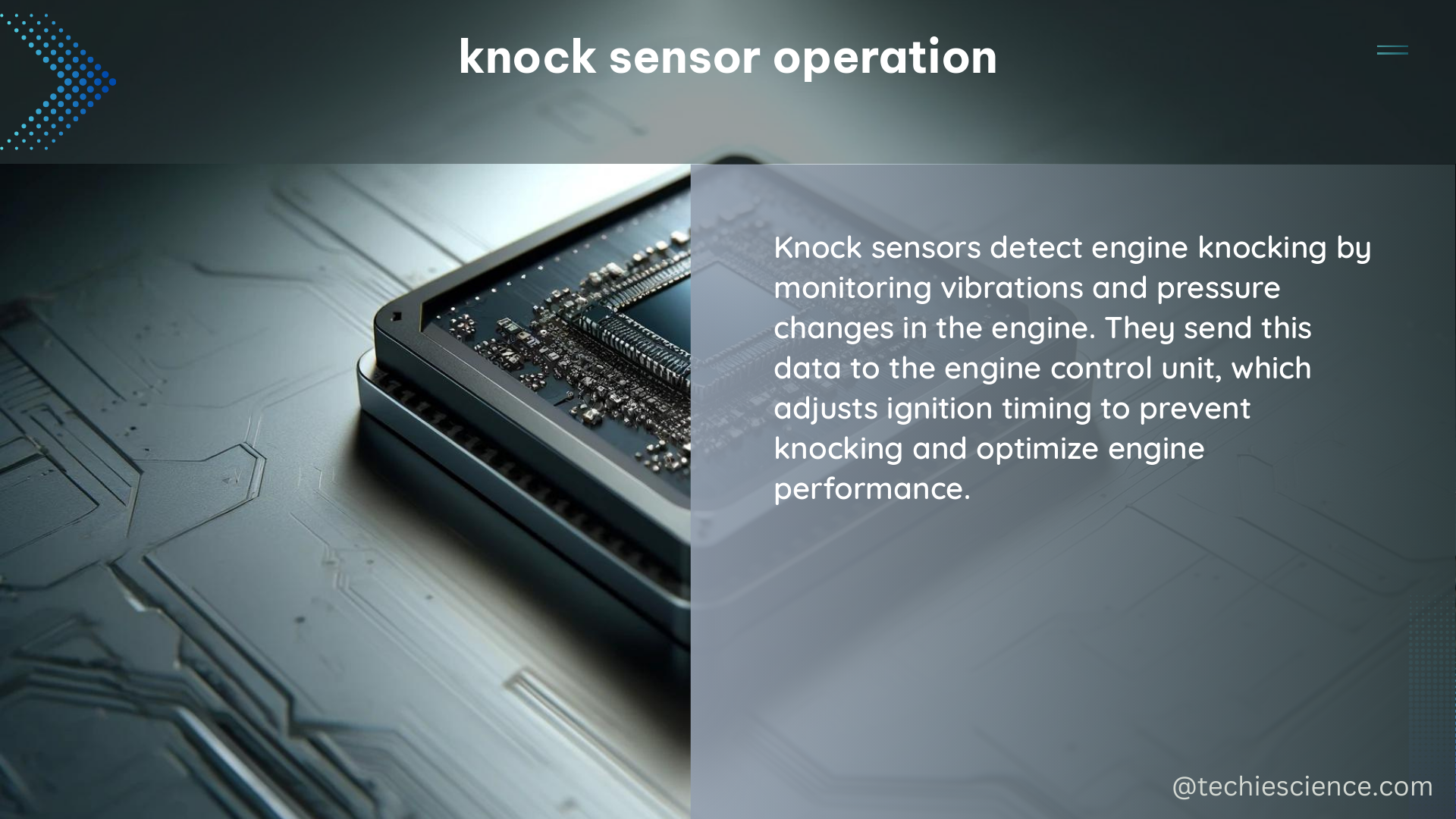The knock sensor is a crucial component in modern internal combustion engines, responsible for detecting and preventing engine knock, a phenomenon that can lead to severe engine damage. This analog device functions much like a microphone, sensing vibrations within the engine and relaying this information to the Engine Control Module (ECM) to optimize engine performance and protect the engine from harm.
Understanding the Knock Sensor
The knock sensor is typically located near the engine block, strategically positioned to capture the vibrations generated during the combustion process. Under normal operating conditions, the knock sensor sends a voltage reference signal of 8-10 volts to the ECM, providing a baseline for the system to monitor.
When engine knock occurs, the sensor’s signal fluctuates, indicating the presence of this abnormal combustion event. The ECM then responds by retarding the ignition timing, reducing the likelihood of further knock and protecting the engine from potential damage.
Technical Specifications of the Knock Sensor

- Sensor Type: The knock sensor is an analog device that functions as a piezoelectric transducer, converting mechanical vibrations into electrical signals.
- Voltage Output: Under normal circumstances, the knock sensor outputs a voltage reference signal of 8-10 volts to the ECM.
- Sensitivity: The sensor is designed to be highly sensitive, capable of detecting even the slightest variations in engine vibrations caused by knock.
- Frequency Range: The knock sensor is tuned to respond to a specific frequency range, typically between 5-20 kHz, which corresponds to the frequency of engine knock.
- Mounting Location: The sensor is strategically positioned near the engine block, often in close proximity to the cylinders, to optimize its ability to detect knock-related vibrations.
- Construction: The knock sensor may utilize a variety of materials and designs, such as the symmetrical rhomboid structure-encapsulated fiber Bragg grating (FBG) technology, which converts changes in strain into modifications of the sensor’s center wavelength.
Diagnosing Knock Sensor Issues
To test for knock counts without the use of a specialized scanner, you can employ the following DIY approach:
- Locate the Knock Sensor Input Wire: Identify the specific wire that connects the knock sensor to the ECM, as this will be the point of measurement.
- Connect an Analog Multimeter: Hook up an analog multimeter, preferably an AC milliamp meter, to the knock sensor input wire.
- Observe the AC Signal: Monitor the AC signal on the multimeter. During normal operation, the signal should remain relatively stable, with a voltage range of 8-10 volts.
- Detect Knock: If the signal begins to fluctuate, it indicates the presence of engine knock. The rapid changes in the signal are a result of the sensor’s response to the vibrations caused by the abnormal combustion process.
It’s important to note that while this method can provide valuable insights into the knock sensor’s operation, it may not be as precise as using a specialized diagnostic tool. The voltage changes during knock conditions can be extremely rapid, and a standard voltmeter may not be able to respond quickly enough to accurately capture the fluctuations.
For a more comprehensive analysis, an oscilloscope would be the preferred tool, as it can provide a detailed view of the sensor’s output waveform, allowing for a more accurate determination of knock events.
Advanced Knock Sensor Technology
Recent advancements in sensor technology have led to the development of more sophisticated knock sensors, such as the engine knock sensor based on the symmetrical rhomboid structure-encapsulated fiber Bragg grating (FBG) design.
In this approach, the sensor converts the change in strain caused by engine knock into a modification of the center wavelength of the FBG, which reflects the change in the external stress. This design offers improved sensitivity, accuracy, and reliability compared to traditional piezoelectric knock sensors.
Conclusion
The knock sensor is a critical component in modern engine management systems, responsible for detecting and preventing engine knock, a phenomenon that can lead to severe engine damage. By understanding the technical specifications, operation, and diagnostic methods for the knock sensor, you can effectively maintain and troubleshoot your engine’s performance, ensuring optimal power output and longevity.
References:
- How does the knock sensor function? Is it a ground or a power? Want to look for knock counts…
- How does the knock sensor report knock counts to the computer? Does it ground out when it hears a knock, or does it show voltage when it hears a knock or what? I’m thinking if I hook up an analog multimeter to it, I may be able to actually SEE it report the knock counts.
- Engine Knock Sensor Based on Symmetrical Rhomboid Structure-Encapsulated Fiber Bragg Grating

The lambdageeks.com Core SME Team is a group of experienced subject matter experts from diverse scientific and technical fields including Physics, Chemistry, Technology,Electronics & Electrical Engineering, Automotive, Mechanical Engineering. Our team collaborates to create high-quality, well-researched articles on a wide range of science and technology topics for the lambdageeks.com website.
All Our Senior SME are having more than 7 Years of experience in the respective fields . They are either Working Industry Professionals or assocaited With different Universities. Refer Our Authors Page to get to know About our Core SMEs.